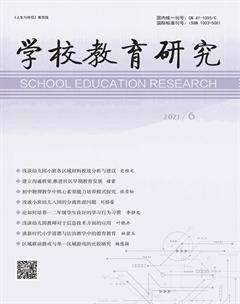The nature of language in relation to critical thinking and socio-cultural context
王紫璇
Language is an innate systematic response in the life of human beings. It comprises a system of physical reactions such as sounds, gestures, and signs used for communicational purposes. The primary tool of communication is language and, consequently, reveals one's literacy level in society. Socio-cultural factors are typically the root cause of one's literacy. These factors yield one's disposition in life and involve their character, which encompasses their attitudes, feelings, and thoughts that accounts for their overall behavior. Ultimately, exposure in their daily life reflects the level of knowledge that they have retained. Peter Smagorinsky, an educator, analyzes the Vygotskian perspective regarding the collective undercurrents in classrooms as he mentions that he "might have been more sensitive to the needs of the many students (he) taught whose cultural backgrounds were different from (his) own" (2007, p.62). He uses the Vygotskian perspective incorporated with his understanding of achieving literacy in the education system to justify his stance on how social practices and acculturation influence epistemology.
Firstly, to rationalize the human capabilities of reasoning, literacy is the fundamental law of effective communication. According to Creighton (1997, p.439), literacy helps both students and teachers with the analytical capability for texts and illustrations. Literacy is a driver for dialogue based on the assumptions that can form the texts, teacher, or students at any academic level.
Secondly, experimentalism in society has foregrounded its initial concept of being based as heterogeneous by nature. Hence, cultural forces' inclusion of other cultures has created a new concept of a homogenous society, meaning that society has become more diverse, which incorporates more elements of culture disposition, fashioning a melting pot of cultural exposure.
Third, Per Smagorinsky (2007, p.63), those who follow the Vygotskian perspective have found themselves in situations where students in the school come with a different perspective of what they think it might be and detail. These social norms outweigh their ideologies, and students find it hard to cope with disciplinary practices, which, in turn, alter their mindset and negatively affect their behavior.
Specifically, the relationship between language and culture is founded in expressionism. The communication of reciprocating internal thoughts externally by verbalization demonstrates how language is viewed and understood by different cultures. Conversing is a universal activity that requires language fundamentals: thinking, reading, writing, and speech. In brief, children are the product of their experiences as their development is a consequence of their environment as these socio-cultural factors shape an individual from the initial stages of development, and their impact on their society is everlasting. In many ways, cultural assimilation is supposed to be advantageous to young minds as it bridges the gaps between differences and merges them to create a diverse reality. The nature of language is derived from both cultural thinking and critical thinking. These are the principles of assessing one's language abilities and understanding how language structures one's life based on elements in society such as etiquette. Therefore, in concluding, ones cultural background influences their critical thinking and thinking practices, such as speech services in the developmental process of "new ideas" (Smagorinsky, 2007, p.66). Thus, critical thinking encapsulates the nature of language as it shows the catalyst of growth in one's abilities and society and the language arts.
References
Creighton, Donna. “Critical Literacy in the Elementary Classroom.” Language Arts, vol. 74, no. 6, 1997, pp. 438–444. JSTOR, www.jstor.org/stable/41482896. Accessed 23 Dec. 2020.
Smagorinsky, Peter. “Vygotsky and the Social Dynamics of Classrooms.” The English Journal, vol. 97, no. 2, Jan. 2007, pp. 61–66., doi:10.2307/30046790.

